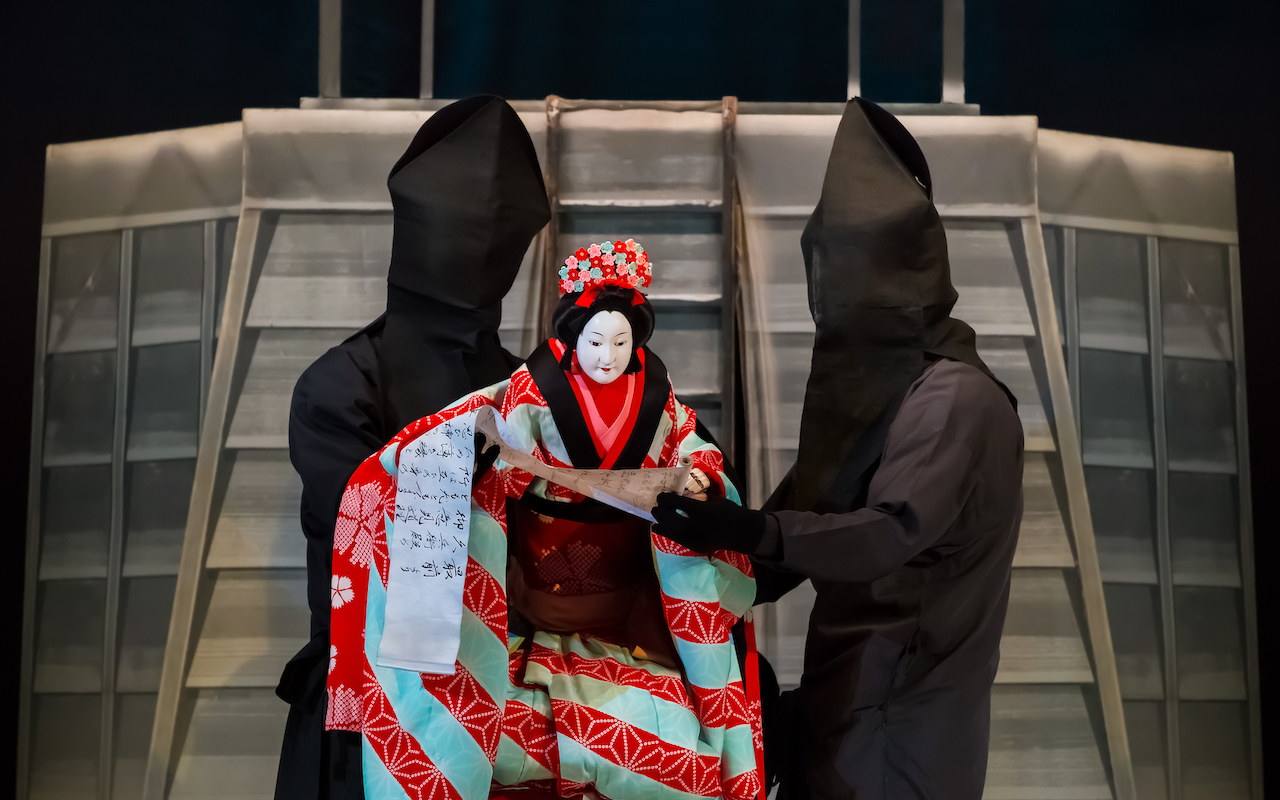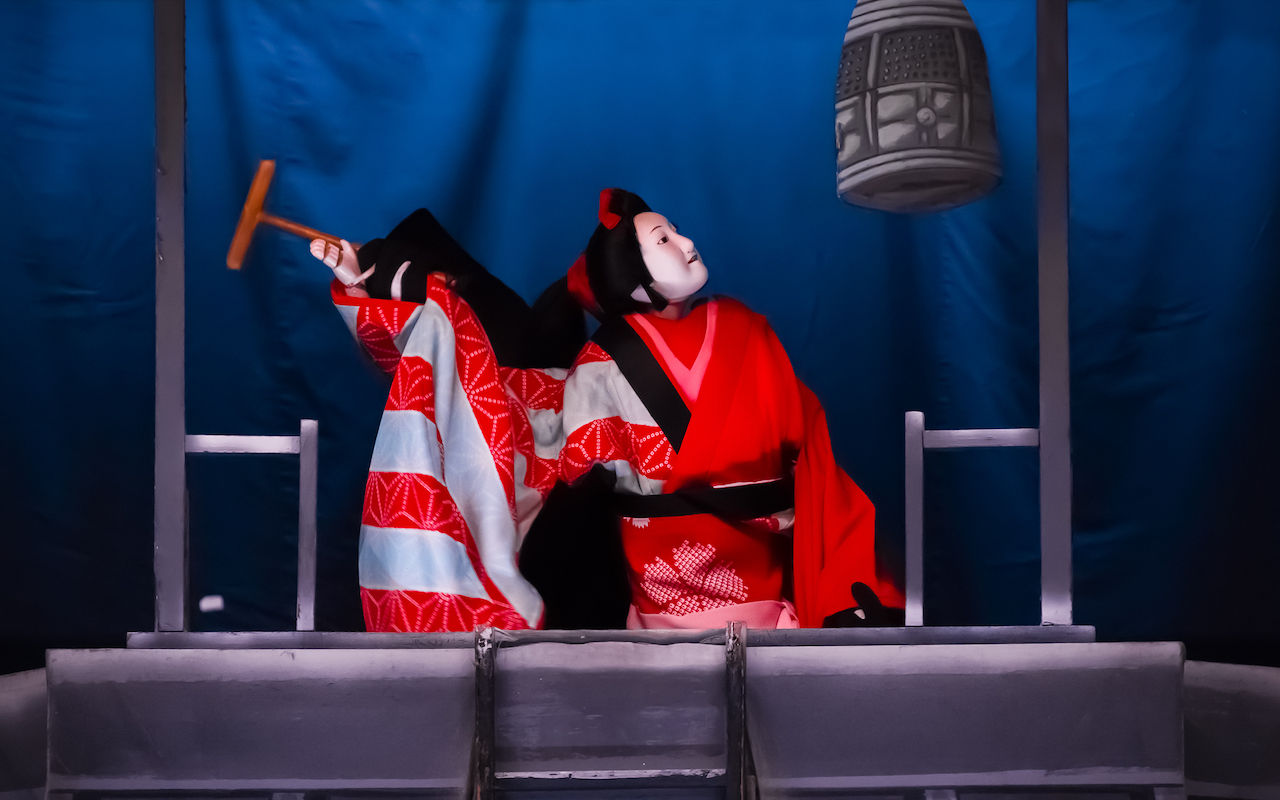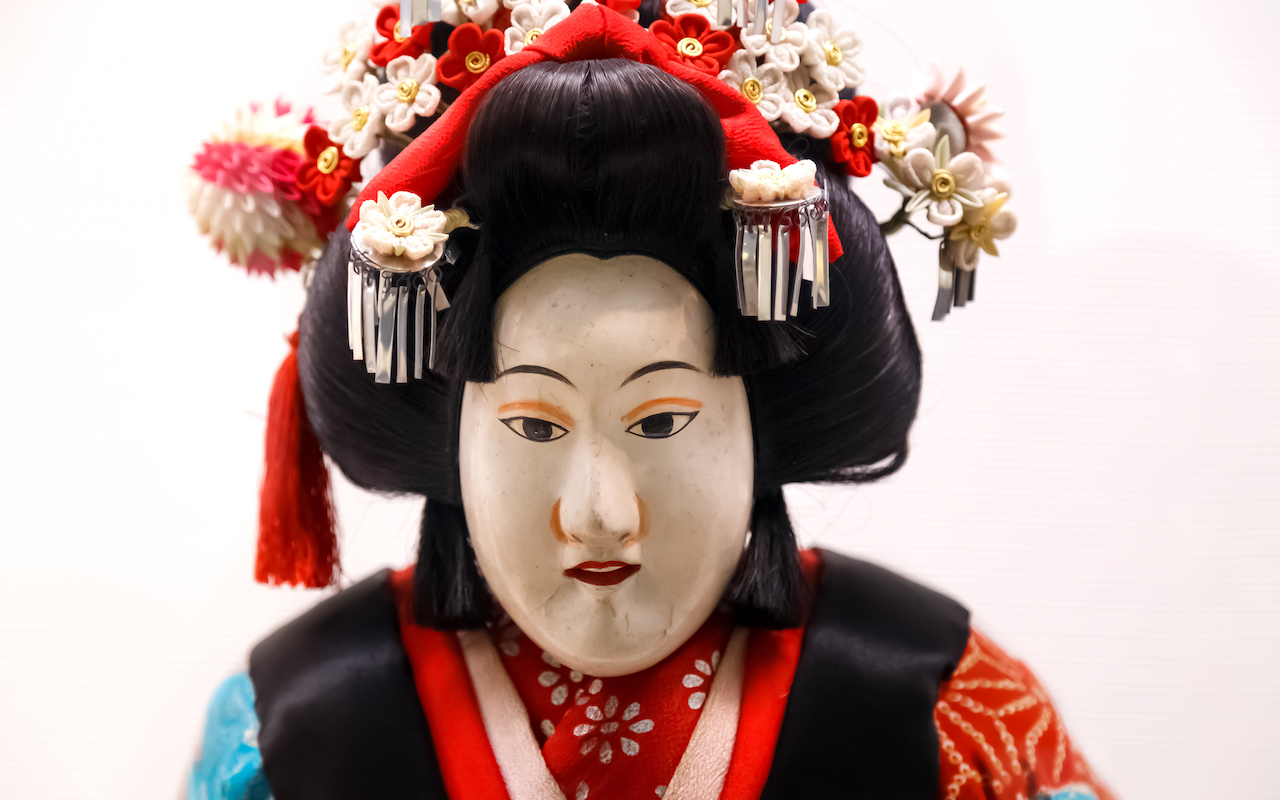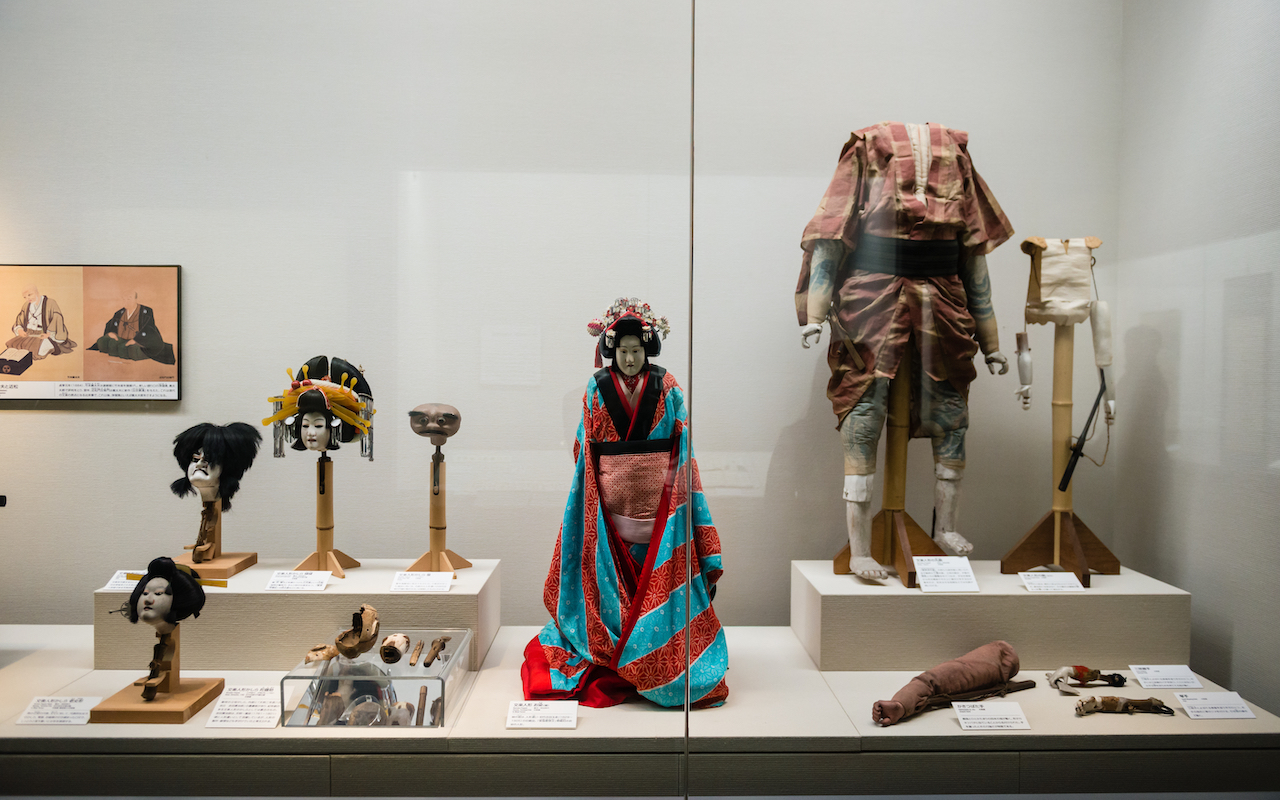1. Bunraku has a long history
Traditional Japanese puppet theatre, known as bunraku, emerged more than 300 years ago during the Edo period, where it flourished in Osaka. This stage art form was recognised by UNESCO as a World Intangible Cultural Heritage in 2003. Bunraku and its sister art form, kabuki – traditional musical theatre known for its pageantry and elaborate costumes – rose to prominence around the same time in the 17th century and liberally borrowed techniques and concepts from each other. Centuries later, it remains a well-loved artistic practice that’s garnered much appreciation outside of Japan – the first complete bunraku performance in Singapore was staged on October 22 and 23 at the Drama Centre Theatre to mark the 10th anniversary of the Japan Creative Centre, a cultural hub run by the Embassy of Japan in Singapore.

2. It is a sophisticated, intricate art form
Bunraku puppets are typically half life-size, and each figurine is operated by three puppeteers – a lead puppeteer who manipulates the puppet’s head, face and right hand, and two assistants who manoeuvre its left hand and legs. While you can see the face of the lead puppeteer – who is the star of the show and is often colourfully dressed – the other two are cloaked in black with their faces covered, to reflect their status as “invisible” actors. All three have to collaborate closely to ensure they are in sync and that the puppet’s movements are smooth and cohesive. The secret lies in the non-verbal cues the lead puppeteer provides the other two performers – usually by using the puppet’s neck or the whole body to give directions on the next move.
3. Other talented artists are involved too
The puppets’ movements are accompanied by a narrator, also known as tayū. The tayū requires a wide vocal range as he voices all the characters; he does this by altering his pitch to express different genders and ages. He also needs to be able to project his voice across the theatre, as no microphones are used during the performance. Another key member of the theatre is the shamisen player, who is responsible for conveying the mood and setting the pace of the narration. He plays a futozao shamisen, a three-stringed traditional musical instrument with a broad neck and large body that creates a loud and resonating tone. The result is artistry at its finest: a fascinating symbiosis of puppetry, storytelling and music.

4. It is the product of a lifetime of training
The performance on stage might seem seamless and natural, and this is a result of the puppeteers, narrators and musicians who have dedicated their lives to this art form – training begins when they are children. For the puppeteers, they attend a bunraku training school for two years. Then they embark on a 10-year-long apprenticeship, learning to operate a puppet’s legs, before another 10 to 15 years spent learning how to manoeuvre its left arm. Only after this extended period of training can they can begin the process of becoming a lead puppeteer.

5. The puppets are carefully crafted for a lifelike performance
All the puppets sport skilfully carved wooden heads and intricately painted faces. Some have movable fingers, eyes, eyebrows and mouths. The heads are attached to a rod, which is how the main puppeteers operate them. If a puppet has movable parts in its face, strings are added to the rod to enable manipulation of the facial features. The rod is then attached to a shoulder board from which the puppet’s costume hangs. Fun fact: Female puppets are not made with legs. Puppeteers use their fists under the figurine’s kimono to imply leg movement instead.
6. Many bunraku plays are historical
The stories told on stage are usually based on historical events, folktales about heroes, feudal wars or the love stories between commoners in the Edo period. Most of the plays are tragedies, which is why many performances are only intended for an adult audience. For example, an iconic bunraku play is Chikamatsu Monzaemon’s Love Suicides at Sonezaki, which was first performed in 1703 and was based on the real-life case of two lovers who committed suicide together in the Sonezaki forest in Osaka during the same year.

7. You can watch an authentic performance in Japan
One of the best places to see this traditional art form is at the National Bunraku Theatre, which was established in 1984 in Osaka’s Nipponbashi district. The performing arts complex serves as a base to preserve, develop and promote the traditional art form in the Osaka-Kyoto area. English programs are available, and some performances provide headsets with English commentary. Another option is the National Theatre in Tokyo’s Hayabusacho district, which opened in 1966 and stages performances several times a year.
Singapore Airlines flies to Osaka and Tokyo daily. To book a flight, visit singaporeair.com
SEE ALSO: Art on a plate: 5 places to enjoy kaiseki in Tokyo
The post 7 things to know about bunraku, the traditional Japanese puppet theatre appeared first on SilverKris.
from SilverKris
No comments:
Post a Comment